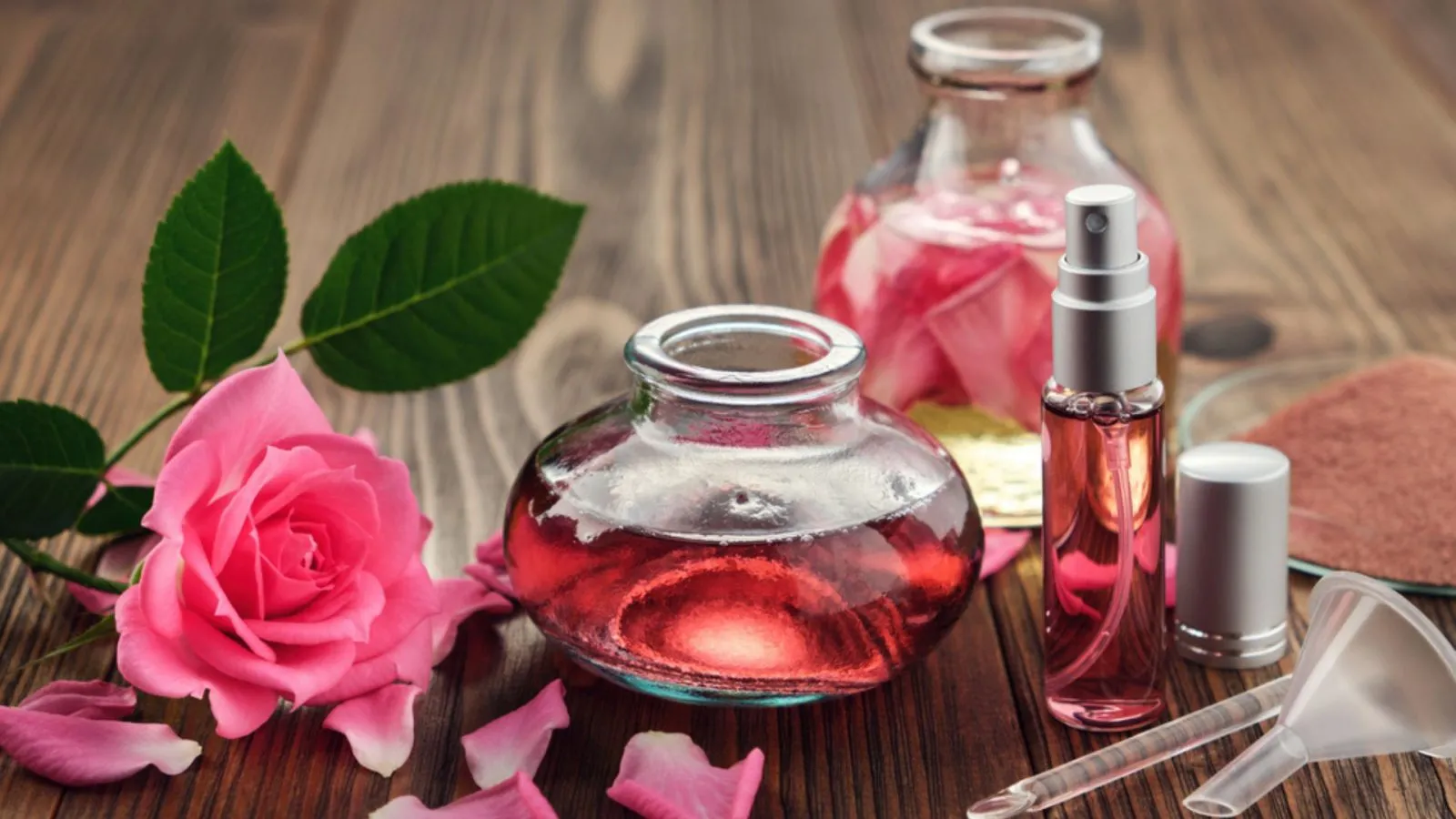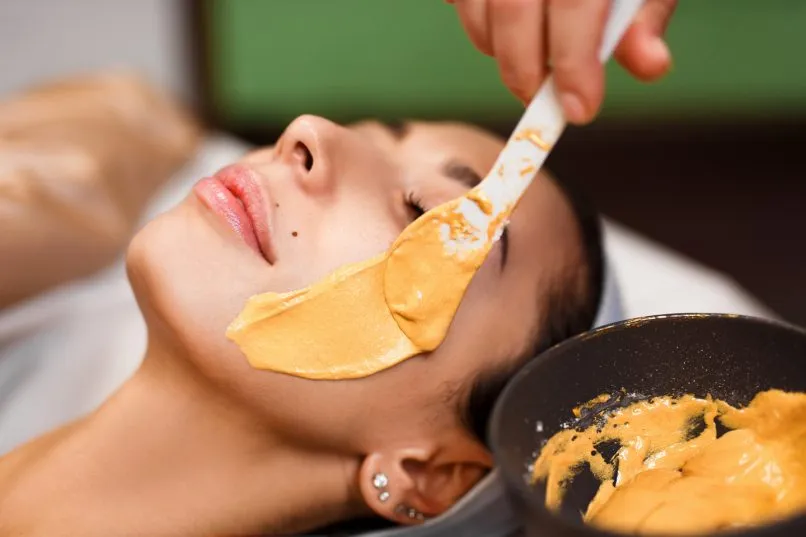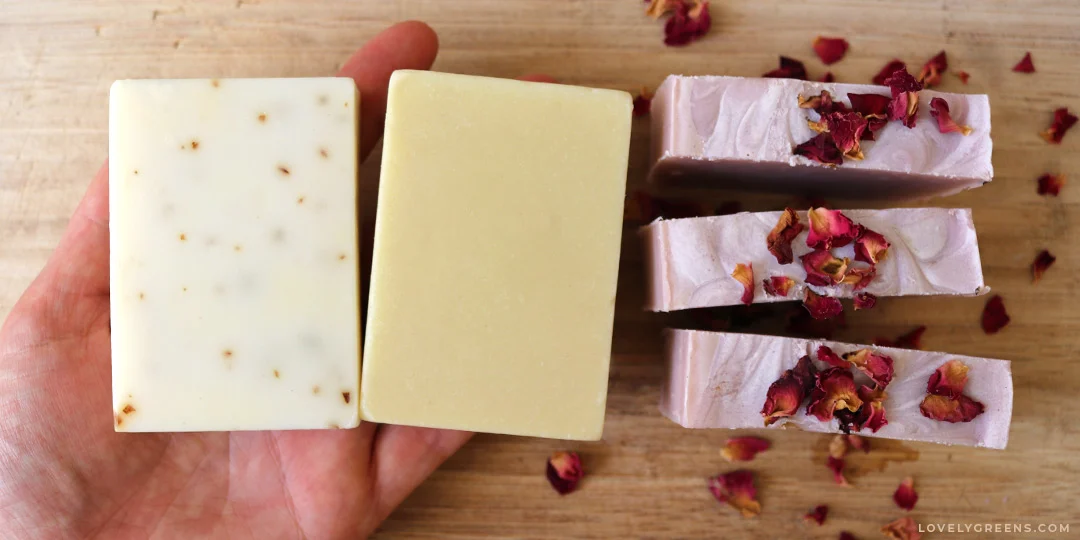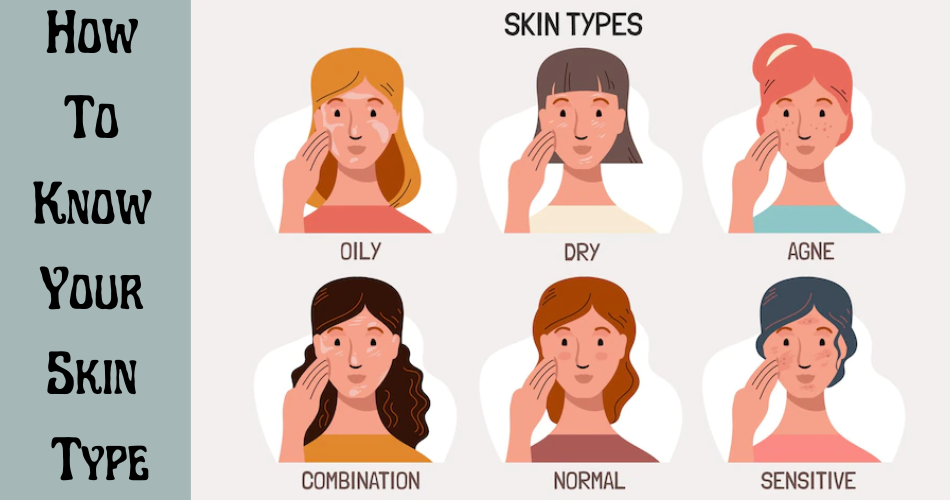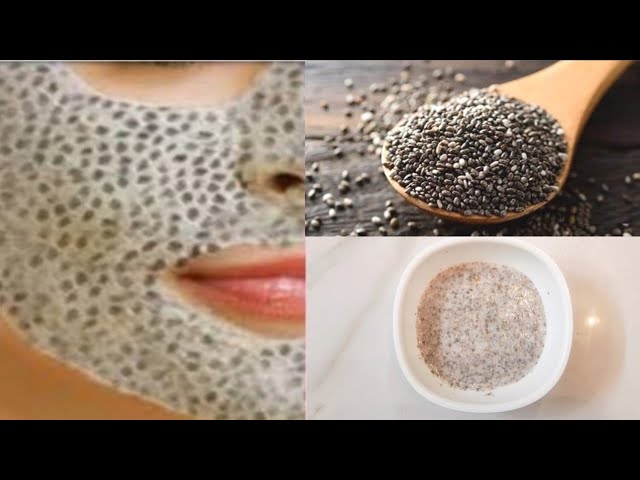Rose water, a liquid made from water infused with rose petals, is one of the many ways roses can be used for health, beauty, and even food and drink. Here in this post, you’ll learn to make rose water at home easily. Scroll till the end to find out some frequent asked question about uses of rose water for skin, hair and health.
Benefits Of Rose Water
Rose water, derived from the distillation of rose petals, has been used for centuries for its various beauty, health, and culinary benefits. Here are some of the potential benefits:
Skin Care:
Hydrating Properties:
It helps in maintaining the skin’s natural moisture balance, making it suitable for both dry and oily skin types.
Toning:
It acts as a natural toner, helping to tighten pores and reduce redness, making the skin look refreshed.
Anti-Inflammatory:
Rose water can reduce skin redness and puffiness, making it helpful for soothing irritated skin.
Acne Control:
Its antibacterial properties may aid in reducing acne and preventing breakouts.
Anti-Aging:
Rose water is rich in antioxidants, which can help strengthen skin cells and regenerate skin tissues, thereby slowing down the aging process.
remove fine lines and wrinkles naturally
Hair Care:
Nourishing:
When applied to hair, rose water can nourish and moisturize the scalp, preventing dryness and flakiness.
Hair Fragrance:
It leaves a pleasant fragrance on the hair, making it a natural and chemical-free hair perfume.
Eye Care:
Reduction of Puffiness: Soaking a cotton pad in chilled rose water and placing it on closed eyelids may help reduce eye puffiness and refresh tired eyes.
Culinary Uses:
Flavoring Agent:
Rose water is used in cooking and baking to add a unique floral flavor to desserts, beverages, and sweets.
Aromatherapy:
Its pleasant aroma is often used in aromatherapy to promote relaxation and reduce stress.
Health Benefits:
Digestive Aid:
Rose water can be used to relieve digestive issues when consumed in small quantities. It is believed to have mild laxative properties.
Anti-Anxiety:
The aroma of rose water can have a calming effect, potentially reducing anxiety and stress levels.
General Uses:
It can be used as a natural room or linen freshener due to its pleasant scent.
Mood Enhancer:
Its aroma is known to uplift the mood and promote feelings of well-being.
Note: While it offers numerous benefits, it’s essential to ensure you’re using a high-quality, pure, and food-grade product, especially if you plan to consume or apply it directly to your skin. Always perform a patch test to check for allergies or skin sensitivities before applying it to your face or body.
How To Make Rose Water At Home
Making rose water at home is a simple process and can be done with just a few ingredients.
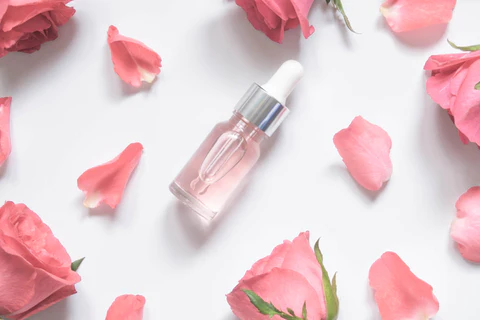
Here’s a detailed step-by-step guide in points:
Ingredients:
- Fresh rose petals (make sure they are pesticide-free)
- Distilled water
- A large pot with a tight-fitting lid
- Ice cubes
- A heat-resistant bowl that fits inside the pot
- A brick or a heat-resistant trivet
- Cheesecloth or a clean muslin cloth
- A clean, empty glass jar with a lid for storing the rose water
Steps:
Gather Fresh Rose Petals:
Collect fresh and fragrant rose petals from organic, pesticide-free roses. Typically, darker colored roses have a stronger aroma.
Clean the Petals:
Gently rinse the rose petals under running water to remove any dirt or impurities. Pat them dry with a clean cloth or paper towel.
Prepare the Pot:
Place a brick or a heat-resistant trivet inside a large pot. Put the pot on the stove and place the heat-resistant bowl on top of the brick. The bowl should not touch the bottom of the pot.
Add Rose Petals:
Place the cleaned rose petals in the pot around the brick. Pour enough distilled water into the pot to cover the rose petals but not so much that the water level is near the top of the brick.
Cover with Lid:
Place the lid of the pot upside down. This allows the steam to collect on the lid and then drip into the bowl. Put some ice cubes on the inverted lid.
Simmer and Collect Steam:
Turn on the heat to low. The water in the pot should simmer. As the water heats up, the steam will hit the cold lid, condense, and then drip into the bowl.
Collect:
Let the pot simmer for a couple of hours. Check the bowl in between to make sure it’s collecting the rose water. Once you see a good amount collected in the bowl, turn off the heat.
Strain:
Carefully lift the bowl from the pot. Strain the collected rose water through a cheesecloth or muslin cloth into a clean glass jar. Squeeze the cloth gently to extract all the liquid.
Store:
Store the it in a clean, dry glass jar with a tight-fitting lid. It’s best to keep it in the refrigerator, especially if you’ve made a large batch, to prolong its freshness.
Now you have freshly made rose water that you can use for various beauty and culinary purposes. Enjoy!
Read below for some frequent asked question that you’ll love to know.
1. How To Use Rose Water For Skin
Using rose water on your face can provide several skin benefits, including hydration, toning, and soothing irritation.
Here’s how you can incorporate into your skincare routine:
1. Cleansing:
Soak a cotton ball or pad in rose water and use it to gently cleanse your face. It helps remove dirt and oil, leaving your skin refreshed.
2. Toning:
Rose water acts as a natural toner, helping to balance your skin’s pH level and tighten pores. Apply it on your face using a cotton pad after cleansing. Let it air dry or gently pat your skin.
3. Face Mist:
Pour into a spray bottle and mist your face throughout the day to keep your skin refreshed and hydrated, especially in dry or hot weather.
4. Makeup Remover:
Gentle Makeup Remover: Dampen a cotton pad with rose water and use it to remove makeup gently. It’s particularly effective for removing eye makeup without harsh scrubbing.
5. Face Masks:
Mix rose water with natural ingredients like honey, yogurt, or clay to create homemade face masks. Apply the mask to your face, leave it on for 10-15 minutes, and then rinse off for a refreshing glow.
6. Puffy Eyes:
Soak cotton pads in chilled rose water and place them on your closed eyelids for 10-15 minutes. This can help reduce puffiness and refresh tired eyes.
7. Moisturizing:
Mix with Moisturizer: Add a few drops of rose water to your regular moisturizer. Apply the mixture to your face for added hydration and a subtle rose fragrance.
2. How To Use Rose Water For Hair
Rose water is not only beneficial for the skin but also for hair. It can help nourish and moisturize your hair, leaving it fragrant and soft. Here’s how you can use on your hair:
1. Hair Rinse:
After shampooing your hair, use rose water as a final rinse. Dilute it with water in a 1:1 ratio and pour it over your hair. Gently massage your scalp and hair, then rinse with plain water. This can add a subtle fragrance to your hair and make it soft and manageable.
2. Leave-in Conditioner:
Mix rose water with water in a 1:3 ratio (1 part rose water, 3 parts water). Pour this mixture into a spray bottle. Spritz it on your hair as a leave-in conditioner. It helps in detangling and adds a light fragrance to your hair.
3. Scalp Massage:
Mix rose water with a carrier oil like coconut oil or jojoba oil. Apply this mixture to your scalp and massage gently. Leave it on for a few hours or overnight for deep conditioning. Wash your hair thoroughly afterward.
4. Hair Mask:
Mix rose water with natural ingredients like yogurt, honey, or aloe vera gel to create a hair mask. Apply the mask to your hair, focusing on the ends. Cover your hair with a shower cap and leave it on for 30 minutes to an hour. Rinse it off with shampoo and water. This can provide deep hydration and improve the overall texture of your hair.
5. Aromatherapy:
If you love the fragrance of roses, you can apply a small amount of undiluted rose water to your hair for a natural perfume effect. Be cautious with the quantity, as the smell can be quite strong.
6. Hair Mist:
Pour diluted rose water into a spray bottle and carry it with you. Whenever your hair feels dry or needs a quick refresh, spritz it with the rose water mist.
7. Hair Styling:
Use a bit on your hair before styling to help set your hairstyle naturally. It can add a light hold and shine to your hair.
Important Tips:
Quality:
Choose high-quality, pure, and organic rose water without added chemicals or artificial fragrances.
Dilution:
If you have sensitive skin or scalp, always dilute rose water with water before applying to avoid irritation.
Allergy Test:
Do a patch test on a small area of your skin or scalp to check for any allergic reactions before using rose water extensively.
By incorporating this water into your hair care routine, you can enjoy its natural benefits and delightful fragrance for healthy and beautiful hair.
3. How To Make Rose Water With Essential Oil
Making rose water using rose essential oil is a quick and easy way to enjoy the benefits of rose water without the elaborate process of distillation. Here’s how you can make it:
Ingredients:
- Distilled water (1 cup)
- Rose essential oil (a few drops, preferably organic and food-grade)
Equipment:
Spray bottle or a glass bottle with a tight-fitting lid
Steps:
Choose a Suitable Bottle:
Select a clean and dry spray bottle or glass bottle with a tight-fitting lid. Make sure it’s thoroughly cleaned and sanitized.
Measure Distilled Water:
Pour one cup of distilled water into the spray bottle. Distilled water ensures that your rose water stays fresh for a longer time.
Add Rose Essential Oil:
Add a few drops of high-quality rose essential oil to the water. The number of drops depends on your preference for the strength of the fragrance. Start with 5-10 drops and adjust according to your liking. Make sure the essential oil is food-grade if you plan to use the rose water for culinary purposes.
Mix Thoroughly:
Close the bottle and shake it gently but thoroughly to ensure the essential oil mixes well with the water.
Label and Store:
Label the bottle with the contents and date of preparation. Store it in a cool, dark place away from direct sunlight. A pantry or a bathroom cabinet works well.
Usage:
Your homemade rose water with essential oil is ready to use! You can use it as a facial toner, body mist, or hair spray. It also works as a natural perfume or room freshener. Shake the bottle gently before each use to ensure the oil is evenly distributed in the water.
Note: While making with essential oil is convenient, it’s important to use a good-quality, pure, and organic essential oil to ensure you’re getting the best benefits. Also, if you’re using it on your skin, do a patch test first to ensure you don’t have any adverse reactions. If you plan to use it for culinary purposes, ensure the essential oil is safe for consumption.
4. How To Make Rose Water Without Boiling
You can make a simple and easy version without boiling. This method involves steeping fresh rose petals in water. Here’s how you can do it:
Ingredients:
- Fresh organic rose petals (about 2 cups)
- Distilled water (enough to cover the rose petals)
Equipment:
- Glass jar with a lid
- Cheesecloth or a clean muslin cloth
- Small glass bowl or measuring cup
Steps:
Collect and Clean Rose Petals:
Gather fresh, organic, pesticide-free rose petals. Rinse them gently under running water to remove any dust or insects. Pat them dry with a clean cloth or paper towel.
Place Rose Petals in a Jar:
Put the cleaned rose petals into a clean glass jar. Pack them loosely; you don’t want to crush them.
Add Distilled Water:
Pour enough distilled water into the jar to completely cover the rose petals. Ensure that all the petals are submerged in the water.
Seal the Jar:
Seal the jar tightly with a lid. Allow the rose petals to steep in the water for at least 24 to 48 hours. You can leave the jar at room temperature or place it in the refrigerator for a cooler infusion.
Strain the Rose Water:
After 24 to 48 hours, the water would have absorbed the essence and fragrance of the rose petals. Use a clean cheesecloth or muslin cloth placed over a small bowl or measuring cup to strain the liquid. Squeeze the cloth gently to extract all the rose water.
Store the Rose Water:
Transfer the strained rose water into a clean, dry glass bottle or jar with a tight-fitting lid. Store it in the refrigerator to keep it fresh for a longer time.
Your homemade rose water without boiling is ready to use! You can use it as a facial toner, body mist, hair spray, or even add it to your bath for a luxurious experience. Remember to do a patch test before using it on your skin, especially if you have sensitive skin, to ensure there are no adverse reactions.
5. How To Use Rose Water For Cooking
It is a versatile ingredient used in various culinary dishes, particularly in Middle Eastern, Indian, and Mediterranean cuisines. It adds a unique floral aroma and flavor to both sweet and savory dishes.
Here’s how you can use in your cooking:
**1. ** Desserts:
Pastries and Cakes:
Add a few drops of rose water to cake batters, cookies, or pastry fillings for a delightful floral flavor. It pairs especially well with almonds, pistachios, and citrus fruits.
Puddings and Custards:
Enhance the flavor of puddings, custards, and rice desserts like kheer by incorporating a small amount of rose water.
Ice Cream and Sorbets:
Add a subtle rose flavor to homemade ice cream, sorbets, or gelato. Mix it into the base before freezing.
**2. ** Beverages:
Mocktails and Cocktails:
Create refreshing mocktails by adding a few drops of rose water to lemonades, iced teas, or sparkling water. It can also be used in cocktails to add a unique twist to the flavor.
Hot Beverages:
Infuse hot drinks like tea, coffee, or hot chocolate with a subtle floral aroma by adding a drop or two of rose water.
**3. ** Fruit Salads and Compotes:
Enhanced Flavors:
Drizzle a small amount of rose water over fruit salads or compotes made with fruits like strawberries, watermelon, or lychee. It accentuates the natural sweetness of the fruits.
**4. ** Syrups and Sauces:
Rose Syrup:
Prepare a simple syrup by mixing equal parts water and sugar. Heat until the sugar dissolves completely, then add rose water. Use this rose syrup to sweeten beverages, drizzle over pancakes or waffles, or mix into yogurt.
Sauces:
Introduce a unique flavor to sauces, such as raspberry or chocolate sauce, by adding a tiny amount of rose water. It can elevate the overall taste profile of your dish.
**5. ** Middle Eastern and Indian Cuisine:
Rice Dishes: Add a few drops of rose water to rice dishes like biryanis or pilafs in Middle Eastern and Indian cuisine. It complements the spices and adds a fragrant note to the rice.
Important Tips:
Moderation:
Rose water has a strong flavor, so use it sparingly. Start with a small amount, taste your dish, and add more if necessary.
Quality:
Use high-quality food-grade without additives or preservatives for the best flavor.
Storage:
Store it in a cool, dark place away from direct sunlight to preserve its aroma and taste.
By experimenting with rose water in your cooking, you can create dishes with a unique and aromatic twist, adding a delightful floral
essence to your culinary creations.
6. How To Make Rose Water At Home For Eyes
Making rose water at home for your eyes is a simple and same process that have mentioned above.
Make sure to let it cooled first, transfer it to a small glass bottle with a dropper or a small spray bottle. Using a dropper or a spray bottle allows you to apply to your eyes easily and hygienically.
Storage:
Store the it in the refrigerator to keep it fresh and cool. The cool temperature can enhance its soothing effect when applied to the eyes.
Usage:
Use the homemade rose water for eyes by applying a few drops with a dropper or spraying a gentle mist over closed eyelids. You can do this in the morning or before bedtime for a refreshing and relaxing experience.
Note: Always ensure that the rose water is at room temperature or slightly chilled before applying it to your eyes. If you experience any discomfort or irritation, discontinue use and consult with an eye care professional.
Do you know your skin type?
Find out your skin type easily today!


